Exploring the unique culture of care in Korea
What does it mean to care -- deeply, instinctively, and culturally? In this series, "Caring the Korean Way," we explore the distinct practices, beliefs, and values that shape how Koreans care for themselves and each other. From time-honored folk remedies to modern reinterpretations of healing, each story offers a window into the unique ways care is expressed in Korean life. -- Ed.
Uh-oh, it’s Day One. That dreaded moment of realization. Wait, didn’t I just have my period? -- and boom, the cramps begin.
Menstruation happens when your uterus, having prepped a cozy little nest for a baby, realizes no one’s moving in. So it tears down the wallpaper -- literally. It’s not just blood; it’s clots and tissue painfully peeling away from the uterine wall.
Most of us survive each month with a trusty Tylenol and a heating pad, but is there a long-term solution to this monthly misery?
In Korea, many women turn to something surprisingly old-school and herbal: ssuk -- mugwort.
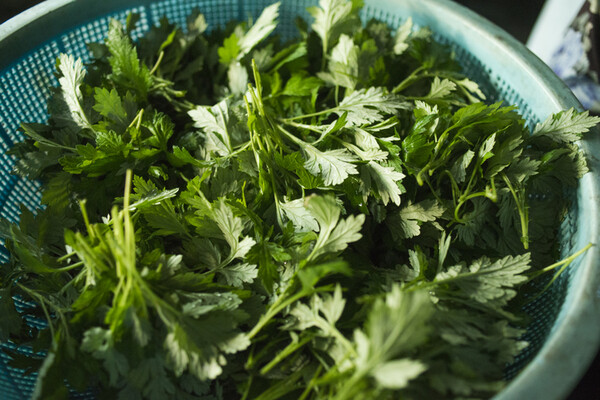
Claire Kim, a 45-year-old office worker in Seoul, vividly remembers her mother’s familiar words whenever she complained of menstrual cramps as a teenager: “Ssuk is good for a woman’s body. It warms your lower tummy.”
In spring, when Kim returned home from school and caught the earthy aroma of mugwort soup wafting from the kitchen, it was more than just a seasonal dish. It was a signal: spring had arrived, the days were warming, and soon, so would her body.
“The scent of ssuk just made me feel calm,” Kim said. “It meant the cold days were gone, and my body would start to warm up with that ssuk.”
She isn’t sure whether mugwort truly eased her menstrual pain all her life, but she’s certain of its soothing psychological comfort.
Kim’s belief in mugwort’s benefits for women’s health is not just a personal memory. It echoes a long-standing tradition deeply woven into Korean culture.
The Donguibogam, a 16th-century canon of traditional Korean medicine, describes mugwort as having a warm nature and offering support for the stomach, liver, and overall vitality.
Come spring, mugwort grows wild across Korean mountains, trails, and neighborhood parks. It’s common to see clusters of ajummas -- middle-aged Korean women -- picking the herb by hand, their baskets soon filled with leaves destined for soups, teas, rice cakes, and pancakes.
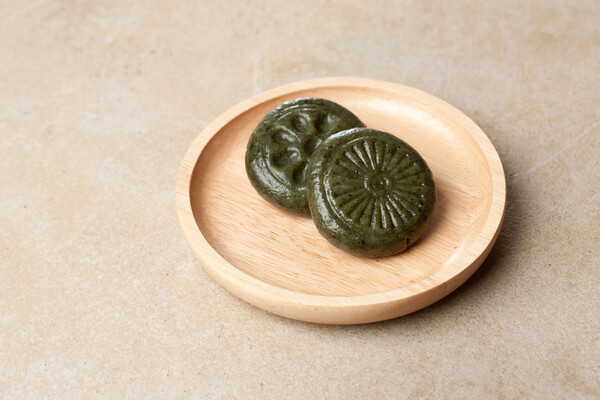
Medical effects of ssuk, insurance coverage for herbal medicine
Lee Ma-seong, director of GangdongGildong Maeil365 Korean Medicine Clinic in Seoul, said mugwort is commonly used as an ingredient in herbal medicine to relieve menstrual cramps.
He explained that mugwort helps smooth out blood clots -- known in traditional Korean medicine as eohyeol -- that tend to accumulate around the uterus.
“Menstrual cramps occur when blood builds up and struggles to exit the body. This blockage causes pain throughout the body,” Lee told Korea Biomedical Review. “Mugwort raises body temperature, which improves blood circulation and helps clear those blockages.”
Lee added that herbal remedies for six specific ailments -- menstrual cramps among them -- are now included in a national health insurance pilot program running through 2026.
Ordinarily, a month’s supply of herbal prescriptions for general wellness could cost about 600,000 won. Under this program, though, treating menstrual cramps is much lighter on the wallet — roughly 150,000 won per month — thanks to a 30 percent patient copayment at Korean medicine clinics.
Moxibustion, an oriental therapy that involves burning dried mugwort near the skin of the abdomen, is another common way Koreans use ssuk to ease menstrual cramps.
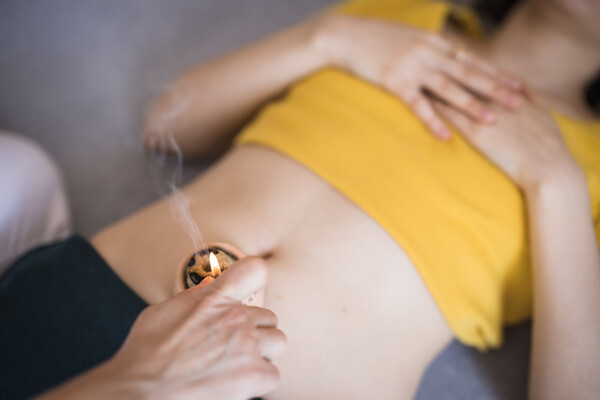
Usually, several moxibustion cones are placed on various spots of the abdomen and lit. This warms the entire stomach area, and the scent of mugwort is said to have a calming effect on the mind.
While widely practiced, these benefits are rooted in traditional Korean medicine and remain debated in modern clinical research.
Stem, sit, soothe: mugwort in the modern age
Trying out moxa sit-on therapy is also popular. Much like couples going to jjimjilbang (Korean saunas) together, many couples share experiences of visiting jwahunbang (moxa steam rooms) as a kind of date, as seen in numerous blog reviews. These jwahunbang are more commonly found outside Seoul, particularly in regional areas.
During jwahun, the herbal vapors and aromatic compounds from the mugwort are absorbed externally and believed to have therapeutic effects on the uterus.
Because mugwort was plentiful and accessible, this practice was widely used even during the Joseon Dynasty (1392-1910), Lee noted.
However, visitors to jwahunbang should exercise caution -- hygiene is paramount during moxibustion therapy. Consumers need to carefully assess whether the facility maintains strict sanitation and whether the temperature of the mugwort moxa is safely controlled.
“You should avoid places that are suspiciously cheap or rundown,” Director Lee advised.
For those hesitant to visit a jwahunbang, Korean women are opting to bring the experience home with at-home moxa steamers.
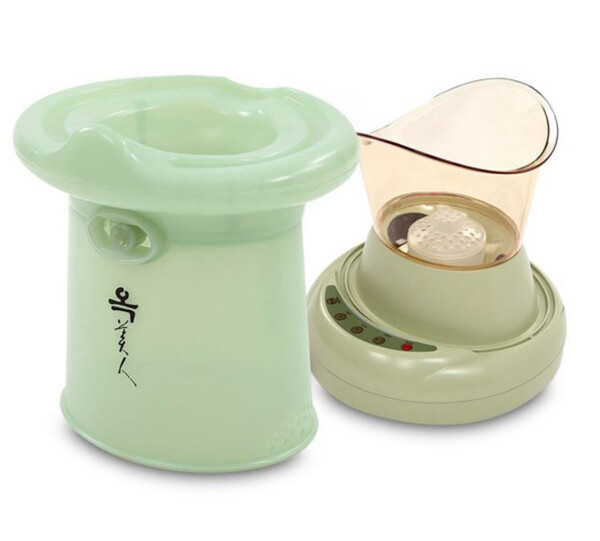
On Korea’s largest mobile shopping app, Coupang, a popular mugwort steamer sells for around 89,500 won and boasts over 370 reviews. Users praise it not only for easing menstrual cramps but also for warming the uterus during pregnancy preparation -- and even for relieving hemorrhoids.
The device lets users adjust the heat from mild to strong and automatically shuts off after 35 minutes.
One reviewer, who goes by “Sun,” said in a review, “Since it uses real mugwort, I trust it. It’s cleaner and more economical than going to a steam room.”
Another reviewer in her 20s said she’s unmarried and young but bought the steamer, believing it’s good to start caring for your body early.
“Honestly, what you can’t see is often the most important for your health,” she said. After about four minutes of use, she noticed the warm herbal scent rising and felt a comforting sense of wellness.
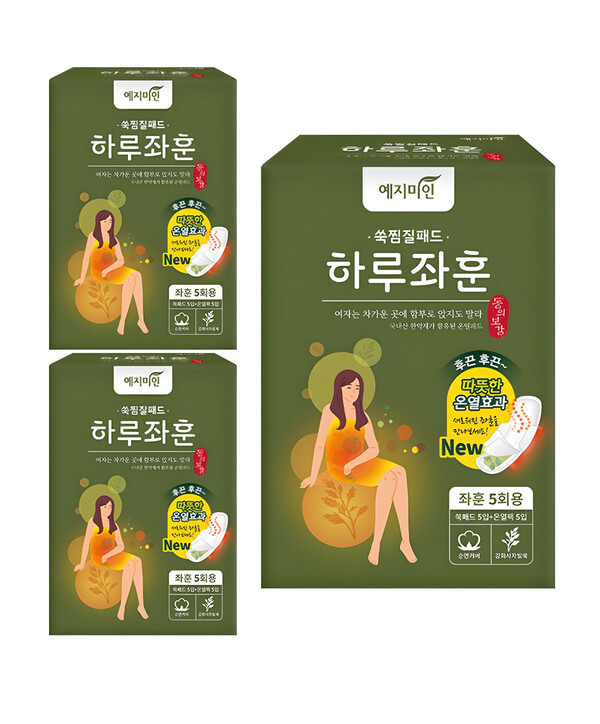
There’s also a mugwort warming pad, but this one isn’t for use during menstruation.
Instead, women with cold lower abdomens use it before or after their periods, especially in winter. Like a hand warmer, you shake the pad a few times, stick it inside your underwear, and it gently heats the area for up to eight hours.
One reviewer said, “Older generations always said women shouldn’t sit on cold surfaces, and now I finally get it. I have really cold lower body parts, but this pad warms me up nicely.”
She also loved the subtle mugwort scent. “It’s not overpowering -- just a gentle, soothing aroma that makes it feel like a mini spa moment,” she said.
However, despite the widespread use of mugwort moxibustion and vaginal steaming, their scientific effectiveness has not been proven.
An obstetrician-gynecologist in Seoul, who requested anonymity, said, “If you have menstrual cramps, taking painkillers is the right thing to do. If painkillers do not work, you should get examined to identify the problem and find a treatment. I do not recommend moxibustion or vaginal steaming to my patients with menstrual cramps.”
On Day One, the cramps will still come, Tylenol will still be there, and so will centuries-old ssuk -- steaming in kitchens, tucked in warming pads, or humming away in at-home devices.
Science may yet have its final say, but for many, the ritual itself is a kind of medicine.
Related articles
- [Caring the Korean Way] Sambok and samgyetang: beating the heat with tradition
- [Caring the Korean Way] Children who inject themselves to be tall under parental pressure
- [Caring the Korean Way] Why Korean grandmas prick your thumb after a big meal
- [Caring the Korean Way] Walking on pebbles: Korea’s foot acupressure culture
- [Caring the Korean Way] The curious case of Korea’s luxury fatigue fighter gongjin-dan
- [Caring the Korean Way] What belly massage really does for children with stomach pain
- [Caring the Korean Way] Mosquito season delayed but not gone: Korea braces for quirky battles
- [Caring the Korean Way] A winter kimchi-making ritual preserves more than cabbage
- [Caring the Korean Way] Korean seasonal superstitions: folklore behind traditional holidays
- ‘Even snacks have labels, but herbal medicine doesn’t,’ lawmaker says

